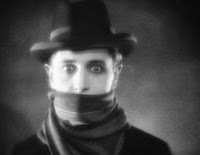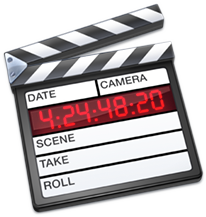To make the prelim even more fun we edited them. We had them on the computer which were iMacs as that’s the best hardrive to edit from. We used the software Final Cut Pro. Our prelims were already on the computers we just had to find them.
We split our group of 5 into a 2 and 3. I worked in the group of two and this meant that we could focus closely on what needed work and what would make the prelim look better. We looked through all of the different shots and decided which ones were best and which ones were necessary to have in the final prelim. We didn't want to delete anything but we put all of the clips that we wanted to include into a file and the ones which we didn't want into another. The two files were called ‘Log bin’ which was where we put the clips that we wanted and then the ‘Rush bin’ for the ones that weren't needed throughout our prelim.
With this programme, you have all the clips that you wanted on one side and two little screens next to it and below was a timeline. We inserted the wide shot as that ran through the whole prelim and then added different shots to that. What we did was just dragged them into the timeline and then you can overlap clips and sort the script of the actors/actresses.
We both watched the wide shot which showed the whole prelim and then put in different shots in from there. We had done a close up of Luca opening the bottle so we decided to put that in because it makes it more interesting for the audience but also they can then see what it is that they are drinking and what they are actually doing. We also did over the shoulder shots.
There were a lot of mistakes made when we were editing our prelim but that was good because then we knew for next time what not to do and what not to do. At first we put the shots in the wrong order so the script wouldn't make sense. We also put the shots in so when you watched back on it they would flick from shot to shot too quickly and it looked silly and didn't flow. This looked un-professional so we changed it and you had to keep watching it and put your self in someone else shoes to make sure that you didn't think that it was boring and to make sure that it flowed.
We had to make sure that the words from the script fitted in with the editing so once we had done part of the editing we made sure that the speaking of the actors would make sense to the audience. You also had to be careful that when putting in different shots that they didn't jump to quick from shot to shot.
Once we had done a little bit of editing we would watch it to make sure that it flowed and at times we had to delete clips because they didn't look right and put new ones in either in the same place or in a different one.
We then watched it through at the end and we were really pleased with it as it was the first time that I had done something like this and I thought that it looked really good. I always wondered how they did it in films but doing it yourself you realise that it’s actually really hard and time consuming.
At the end of ours we added a sound effect of the drunken man in our prelim falling down the stairs at the end we he walked out just to emphasise the fact that he was very drunk. This also helps our knowledge on how to work Final Cut Pro.
 The main reason for a thriller is to nerve people, make them feel on edge. Different techniques help to make a film more scary such as the use of sound and the way the camera is portrayed. You could have a silent thriller and this could build up more tension that it could if it had sound. Thrillers have been used as a genre since the 20's. Alfred Hitchcock decided that he would try silent films and this is when he explored the idea of his films 'The Lodger' and 'Blackmail'.
The main reason for a thriller is to nerve people, make them feel on edge. Different techniques help to make a film more scary such as the use of sound and the way the camera is portrayed. You could have a silent thriller and this could build up more tension that it could if it had sound. Thrillers have been used as a genre since the 20's. Alfred Hitchcock decided that he would try silent films and this is when he explored the idea of his films 'The Lodger' and 'Blackmail'. 










